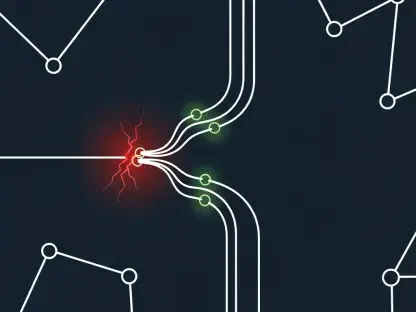The landscape of cybersecurity is continually evolving, with malicious actors becoming increasingly adept at exploiting existing technologies for nefarious purposes. Open-source software, known for its flexibility and accessibility, often becomes a double-edged sword. Among these, Remote Access Tools (RATs) have emerged as a critical concern. Tools like the Chaos Remote Administration Tool (RAT) were initially designed for legitimate system management but are being repurposed by cybercriminals due to inherent vulnerabilities. This not only poses significant risks to individual users but also to corporations and organizations using Linux systems. Understanding the mechanisms and implications of these exploited tools is essential for improving security measures.
The Emergence of Chaos RAT as a Cyber Threat
Exploitation of Legitimate Tools
Chaos RAT stands out as a prime example of a legitimate tool that has been repurposed for malicious uses. Initially developed as a system management application, its functionality includes managing files, executing commands, and controlling network features. Available on open-source platforms like GitHub, this tool allows for easy customization by attackers, who can retain a low profile by blending in with legitimate users. Chaos RAT is particularly attractive to cybercriminals because it lacks robust access controls. As a result, it can be deployed easily, which presents a significant cybersecurity risk.
The tool has been notably used in various cyberattack campaigns, particularly targeting Linux systems. One observed tactic involves masquerading the RAT as legitimate utilities such as network analyzers or system cleaners. This strategy enables attackers to infiltrate systems without raising suspicion. Its open-source nature allows for continuous adaptation, making it a persistent threat in the cybersecurity landscape. Organizations must recognize these capabilities to implement more stringent security measures and protect against such vulnerabilities.
Advancements in Techniques and Persistent Risks
Recent versions of Chaos RAT demonstrate significant advancements, particularly in its encoding methodologies. While older versions transmitted data in plain text, the newer iterations have transitioned to Base64-encoded strings. This enhances security from the attacker’s perspective, making it more challenging for security tools to detect the system’s inherent unauthorized activities. Despite these advancements, older versions still pose risks due to known vulnerabilities, such as command injection and cross-site scripting. These have been documented as CVE-2024-30850 and CVE-2024-31839, highlighting the potential for severe misuse if not properly addressed.
The adaptation of open-source RATs like Chaos RAT within broader malicious campaigns is a worrying trend. Multiple hacker groups have been documented using these tools in a similar context, leveraging the advantages of open-source flexibility and anonymity. Despite a slowdown in active feature updates, the persistent use of Chaos RAT underscores its utility and attractiveness to threat actors. Understanding these dynamics is crucial for security practitioners aiming to mitigate risks associated with legacy vulnerabilities.
Broader Implications of Open-Source RATs
The Trend of Malicious Exploitation
The misuse of Chaos RAT is not an isolated phenomenon; it reflects a broader trend of exploiting open-source RATs for cyberattacks. Security documentation highlights the use of other open-source RATs, such as NjRAT, QuasarRAT, Pupy RAT, and AsyncRAT. These tools provide threat actors with customizable options to carry out varied types of attacks, ranging from information theft to cryptojacking and malware distribution. The open-source nature allows attackers to tweak the software as needed, facilitating their malicious objectives while maintaining a degree of operational stealth.
This tendency elucidates the complex nature of open-source software in cybersecurity, wherein flexibility and community collaboration may inadvertently facilitate negative consequences. As more hacker groups adopt these RATs, the need for heightened awareness and improved defensive strategies becomes imperative. Addressing this issue effectively requires collaboration between developers and security professionals to ensure open-source tools remain secure and minimally exploitable.
The Need for Communication and Coordinated Response
Efforts to mitigate the misuse of tools like Chaos RAT have been hampered by insufficient developer-security researcher communication. Attempts to engage the developer, Tiago Rodrigo Lampert, for comments on these findings were met without response. This gap has potentially limited the development of coordinated, proactive measures to curb the misuse of such software. For open-source communities, ensuring direct communication channels between developers and security experts could lead to more effective resolutions of vulnerabilities.
Given the evolving threat landscape, a proactive approach is essential. Security researchers must continue to document and highlight the issues within these RATs while exploring opportunities for comprehensive collaboration. Engaging communities through forums, conferences, and transparent communication could foster improved security practices, addressing both existing and emerging threats. By focusing on enhancing both technical defenses and communication strategies, the cybersecurity community can better protect against the misuse of these versatile tools.
Navigating the Challenges of Open-Source Tool Misuse
The realm of cybersecurity is constantly shifting, with cybercriminals refining their tactics to exploit existing technologies for harmful purposes. Open-source software, celebrated for its adaptability and ease of use, frequently turns into a double-edged sword. Among such tools, Remote Access Tools (RATs) have surfaced as a significant threat. Originally intended for legitimate system management tasks, tools like the Chaos Remote Administration Tool (RAT) are now being hijacked by hackers due to their vulnerabilities. This presents substantial dangers not only to personal computer users but also to businesses and institutions relying on Linux systems. Therefore, it is critical to comprehend the mechanics and repercussions of these misused tools to enhance security protocols. Cybersecurity experts, along with organizations, must prioritize strengthening defenses and constantly updating protective strategies. Only then can we hope to keep pace with the ever-evolving tactics of cybercriminals.









